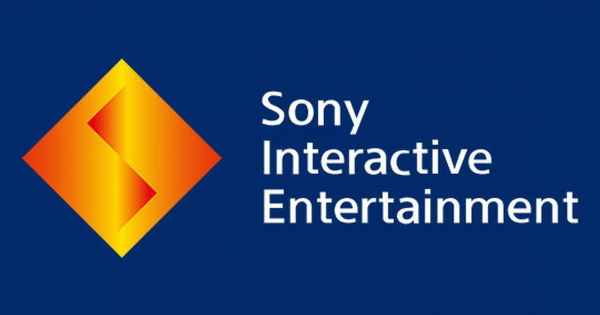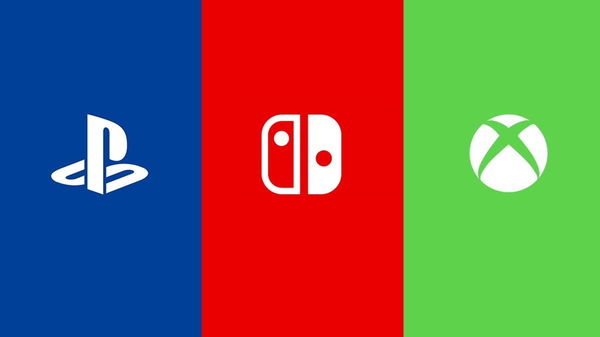Latest PlayStation News

“A Dream Game Come True” ”“ Fans Are Holding Final Fantasy VII Rebirth in High Regard

Here’s When Stellar Blade on PC Might Release Based on This Third-Party PlayStation Exclusive’s History

“Bravo Square Enix” Fans Commend the Developers of Final Fantasy VII Rebirth for Its Fast Travel Feature

Prince of Persia: The Lost Crown, the Way of Metroid We Go

Will Madame Web Get a Video Game Adaptation for PlayStation? Here’s How It Can Happen


More PlayStation News
Why Handheld Gaming Would Be Better for the Future Than Cloud Streaming
While some might think that cloud gaming is the future of gaming, it looks like the industry will be better off focusing on handheld devices.

“Fast-Paced Like Doom” and Dinosaur-Themed FPS Son and Bone’s Estimated Price Revealed
A new FPS is set to launch as a PlayStation 5 exclusive and TeamKill Media LLC has taken to Twitter to share the promising trailer.

Starfield Lands Two Nominations for D.I.C.E Awards While Marvel’s Spider-Man 2 Leads With 9 Nominations
With the nominees for the DICE Awards finally out, fans wonder who will dominate the award show, PlayStation or Xbox.

The Best Handheld Video Game Consoles of All Time
From the Nintendo Game Boy to the Sony PlayStation Vita, gamers through the years were treated to some amazing handheld gaming consoles.

Microsoft Should Bring These Xbox Exclusives to PlayStation 5 and Nintendo Switch
Here are some Xbox exclusive games that Microsoft should consider making multiplatform and expand their playerbase!

Stellar Blade Is the Most Wanted PS5 Game of 2024, Suggests PlayStation Store
Seems like PS5 players are looking forward to enjoy Stellar Blade the most in 2024, according to the official PlayStation Store page.

Sony Has Teased a New Patapon PlayStation Remake in Development!
Sony's conference at the CES 2024 makes an interesting case for a possible Patapon Remake for PlayStation as the devs drop a strong hint

PlayStation Rumor: Insomniac Planning a DLC for Marvel’s Spider-Man 2
Popular industry insider sparks fuel to a massive rumor around Marvel's Spider-Man 2 DLC sourced to the Insomniac Games leak.

Rumor: Stellar Blade Will Have Over 20 Hours of Content, May Release in Summer 2024
An anonymous leaker has claimed Stellar Blade will have 20+ hours of content in its campaign and predicted when in 2024 the game will release.

PS5 Exclusivity Will Make Players “Forget About” Stellar Blade, Here’s the Reason Why
Some players believe making Stellar Blade exclusive for PS5 will prevent many non-console gamers disinterested in it very soon.

Fan Recreates Nintendo PlayStation: The Rarest Gaming Console to Ever Exist!
Creative YouTuber engineers a unique gaming console inspired from the only real prototype of Nintendo PlayStation to exist on the planet

Reports Claim Sony Is Eyeing a New Technological Advancement to ‘Accelerate Game Download’
PlayStation parent Sony Interactive Entertainment releases a patent inviting community attention as it teases a huge tech advancement

Top Forgotten Video Games That Need an Another Chance
There have been a number of forgotten games and franchises that would do well if given another chance, here 5 such games.

Who Is Shin Jae-Eun and What’s Her Stellar Blade Connection? Here’s Everything to Know
Stellar Blade, Shift-Up's upcoming PS5 exclusive, has created buzz online due to its protagonist and her attractive character design.

Highly Anticipated PS5 Pro Won’t Be Announced at CES 2024, Claims Insider
Fans are hyped for PS5 Pro announcement at the upcoming CES 2024 show but a reputed leaker believes Sony won't reveal it before Q3.

These Unique Survival Games Will Put Your Skills to the Test
If you are looking for a unique survival game experience, these 7 games may get the job done, as well as change your perspective on the genre.

These Games Opened Doors to the Most Unique Visuals Ever Seen
While realistic looking games are a very good thing, here are some of the games that might not look real, but they are unique and timeless.

Final Fantasy 16 Dev Gives Update on PC Port and Second DLC
Final Fantasy 16 Producer through New Year greetings makes striking revelations on the progress of the game's PC port and second DLC

Xbox, PlayStation, and Nintendo: Which Console Will Have the Biggest Impact in 2024?
New Year 2024 is going to be insane for gaming, here's everything that would make every platform stand out in 2024.

PlayStation Rumor: Insomniac Plans to Expand Deeper in the Marvel’s Universe Following Wolverine
Following the success of Spider-Man 2 and the buzz around Marvel's Wolverine, Insomniac is allegedly planning a heavy lineup for PlayStation.

Here Are the Top 5 First Party Games by PlayStation That You Should Not Miss Out on in 2024
From The Last of Us Part II Remastered to Helldivers II, here are our top picks for the best games from Sony first party studios in 2024.

Here’s Why Getting Suicide Squad: Kill the Justice League on PS5 Is a Smart Idea
Players waiting for Suicide Squad: Kill the Justice League should purchase it on PS5 in order to receive an exclusive bonus feature.

“Nintendo Is in a League of Their Own” Nintendo Outsells PlayStation When It Comes to First Party Games
Nintendo games outsell their rivals and market leaders PlayStation with Mario Kart 8 Deluxe beating Horizon and God of War.

Is Sony Planning a Return to Fighting Games With a Future Rival to Take On Tekken and Street Fighter?
A new rumor suggests Sony may start making fighting games once again in the near future to rival the likes of Tekken and Street Fighter.

“Not PS5/Xbox Need..” Fans Divided After Elon Musk Hints at Working on ‘X Console Streaming’
A recent statement made by Elon Musk through an X thread fueled an interesting debate online on a possible console direct streaming service

Stellar Blade, a “Promising” Devil May Cry-Esque PS5 Exclusive, Is Now Confirmed for 2024
Korean studio Shift Up's Stellar Blade, featuring a strong female protagonist, is now confirmed to release in 2024 exclusively on PS5.

About PlayStation
History of PlayStation

via Getty
Living room with a Sony PlayStation 5 home video game console and DualSense controller alongside a television, taken on November 3, 2020. (Photo by Phil Barker/Future Publishing via Getty Images)
Early Beginnings
Sony or Sony Group of Corporation is a Japanese Multinational organization based in Tokyo, Japan. It began its journey in 1939 during World War 2. Although founder Masaru Ibuka started the company as an electronic shop with eight employees, soon in 1946, the company bloomed to bring Japan’s first tape recorder Type-G. This company was called Tokyo Tsushin Kogyo, which changed its name to Sony in 1958.
Home video game consoles debuted in 1972, and later became more popular in the mid-2000s. However, previous companies used to develop console devices based on their previous one’s performance. In the 21st century, developers brought the term generation, which was used to specify the technology used for improvising consoles.
Development of PlayStation
The day of December 3, 1994, marked the release of the original PlayStation console in Japan. Competing against the Nintendo 64 and Sega Saturn, it was recognized among the fifth-generation gaming consoles.
The console laid the foundation for the industry to transition into a 3D rendering from 2D graphics. Since Sony's console was based on a CD-ROM drive, it facilitated accurate full-motion video.
It featured a dual-speed CD-ROM optical drive and a one-core CPU with 2MB RAM. Combined with the 1MB of video RAM, it could deliver 3D graphics of more than 300,000 polygons per second. Eventually, Sony's PlayStation became the first video game console to surpass sales of 100 million units.
The console also received a wide variety of games over a decade. Some of the best-selling PlayStation games for the original console are Tekken 3, Crash Bandicoot, Gran Turismo, and Final Fantasy VII.
Sony’s engineer Kutaragi’s work led to a partnership with Nintendo. It was proposed that Sony would make two devices, SNES-CD, an SNES add-on and a console with Nintendo cartridges. However, the partnership didn’t work out well for them.
Evolution of PlayStation Consoles
PlayStation 1
Sony released the PS One on July 7, 2000, and it was a smaller and redesigned version of the original console. The PS One featured two main changes. The cosmetic redesign included a much-rounder chassis and an updated graphical user interface for the home menu.
PlayStation 2
First released on March 4, 200, in Japan, the PlayStation 2 is a part of the sixth generation of video game consoles. It competed with Microsoft's Xbox and Nintendo's GameCube and went on to become the best-selling console to date after selling more than 155 million units over 12 years.
The backward compatibility feature of the PS2 served as a basis for the immense success, with the console having produced upwards of 3,800 games. The PS2 used the 300MHz Emotion Engine CPU and featured 32MB of RAM and 4MB of video RAM. It was also the first console to support DVDs and USB ports.
Besides that, some of the most popular video game series started from PS2. These include Devil May Cry, God of War, Grand Theft Auto III/Vice City/San Andreas, Ratchet & Clank, Kingdom Hearts, etc.
In 2004, Sony released the PS2 Slimline, a significant redesign of the original PS2. Slimline was not only smaller and thinner but also quieter and included a built-in Ethernet port.
PlayStation 3
First released on November 11, 2006, in Japan, the PlayStation 3 sold more than 80 million units worldwide in less than a decade. Being a seventh-generation console, the PS3 competed with Microsoft's Xbox 360 and Nintendo's Wii.
The PS3 introduced the use of motion-sensing technology through its Sixaxis wireless controller. The console featured a Blu-ray disc drive with HD resolution and the first PlayStation system to support HDMI and 1080p output. Moreover, the PS3 also introduced Wi-Fi connectivity offering either a 20 GB or 60 GB hard drive. The HDD capacity increased a lot over the years as the console allowed users to install their own HDD.
Some of the notable PlayStation 3 games are Grand Theft Auto IV/V, The Last of Us, Gran Turismo 5, Uncharted 2/3, Red Dead Redemption, Metal Gear Solid 4, etc.
The PS3 Slim was released in September 2009. The Slim model was not only about a third smaller and lighter, but it also consumed less power and ran quieter, featuring a redesigned cooling system. PS3 Slim also removed the main power switch on the backside of the console.
Later in September 2012, Sony launched the PlayStation 3 Super Slim. This console had a redesigned chassis with a sliding lid covering the optical disc drive that had to be accessed from the top side of the console. The Super Slim model was not only slimmer than the previous model but also three pounds lighter, weighing 4.3 pounds.
PlayStation 4
Sony launched the PlayStation 4 on November 15, 2013, in North America. Sony's eighth-generation console system sold an estimated one million units on the first day, becoming the fastest-selling console in 24 hours to date. The PS4 competed against the likes of Microsoft's Xbox One and Nintendo Wii U. Moreover, it has surpassed the lifetime sales of PS3, with over 102 million units being shipped worldwide within 6 years of launch.
The PS4 marked the first instance Sony released a console with a CPU based on the x86 architecture used by gaming PCs. The console also incorporated a share button on the DualShock 4 controller, giving players the ability to upload and share gameplay clips.
PS4 allows users access to an assortment of free and premium PlayStation network services to play online multiplayer games, including access to the PlayStation Store. Some notable games are Until Dawn, Bloodborne, Uncharted 4, Infamous: Second Son, etc.
Sony officially released PS4 Slim on September 15, 2016. It is a revision of the PS4 hardware, with a smaller casing, rounded corners, and a matte finish on top instead of a two-tone finish. The PS4 Slim runs a bit cooler and quieter and is also more power-efficient. Apart from that, some other upgrades and changes were incorporated.
Sony released the PS4 Pro console worldwide on November 10, 2016. The Pro model came with improved hardware, including an upgraded GPU and higher CPU clock. PS4 Pro is primarily intended to enable gameplay at 4K resolution with buffed graphics performance and enhanced quality for PlayStation VR. Although capable of streaming 4K video, it does not support Ultra HD Blu-ray.
PlayStation 5
PlayStation 5 is set to become the most potent addition to Sony's brand of consoles. It is scheduled to launch on November 12, 2020, in North America, Australia, New Zealand, Japan, and South Korea, and on November 19, 2020, for the rest of the world.
Two variants of Sony's next-gen console are expected to arrive. The Standard Edition of PS5 will incorporate an Ultra HD Blu-ray optical disc drive alongside the digital distribution of titles via the PlayStation Store. Meanwhile, the Digital Edition lacks the disc drive and bears a cheaper cost.
Sales Performance of PlayStation Consoles
PlayStation 1
PlayStation 1 was released in 2000 in the United States. Sony PlayStation 1 received very good responses from the market and sold 28.15 million units in total. Metal Gear Solid, Tomb Raider, Resident Evil 2, and The Dragon were some of the best-selling PlayStation 1 games.
PlayStation 2
PlayStation 2 was released in the United States in 2000. It received a mind-blowing revenue with 155 million units sold globally. Games like Call of Duty, Resident Evil Outbreak, and Navy Seals were the best-selling games on this console device. Sony released the PlayStation 2 Slim in 2004.
PlayStation 3
PlayStation 3 was launched in 2000 in the United States. It sold 87.4 million products becoming the seventh-generation best-selling console in the market. The Last of Us, Uncharted 3, and Killzone are some famous PlayStation 3 launches of the year.
PlayStation 4
PS4 debuted in the North American market in 2014. It received much appreciation from fans for its improvised networking system and audio output. In 2016, Sony improvised this console device to bring the PlayStation 4 Neo in 2018. Elden Ring, Assassin’s Creed Valhalla, and Cyberpunk 2077 are some of PlayStation 4’s best-selling games of all time.
PlayStation 5
PlayStation 5 was released in the United States in 2020. It had a very positive response with over 118,000 units sold in four days. This console device rules the market with its intense VR settings. Games like Final Fantasy XVI, Marvel’s Spider-Man 2, and Assassin’s Creed Mirage certainly developed the sales of PS5 in the market.
Apart from the series of home consoles, Sony has produced several other console systems for various hardware.
PlayStation Brand Expansion
PlayStation Portable
Sony Computer Entertainment created the PocketStation as a peripheral device for the original PlayStation console. It launched exclusively in Japan on December 23, 1999. The miniature game console featured a monochrome LCD, a speaker, and a real-time clock. It could also be used as a PS memory card by connecting it to a PS memory card slot.
The PSP was Sony's primary handheld installment in the series of PlayStation consoles. Being a seventh-generation console, the PlayStation Portable competed against Nintendo's DS. It underwent a release in December 2004 in Japan, in March 2005 in North America, and in September 2005 in other regions.
The console was the first to incorporate a proprietary optical storage medium known as Universal Media Disc(UMD) to store both games and movies. While the original model was PSP-1000, several other models were designed and released later. Those include the PSP-2000, PSP-3000, PSP Go, and PSP-E-1000 models.
PlayStation Vita
Sony considered this handheld console as its Next Generation Portable. The PlayStation Vita launched in Japan in December 2011 and in other regions in February 2012. It succeeded the PSP, and as a part of the eighth-generation video game consoles, it competed with Nintendo's 3DS.
The PS Vita, known as PCH-1000, also received a redesigned model in 2013 and 2014, referred to as the PS Vita Slim or PCH-2000.
Some other PlayStation systems on other hardware systems include the likes of PSX (2003), PlayStation TV(2013/14), PlayStation Classic (2018), etc.
PlayStation VR
PlayStation VR is a virtual reality headset produced by Sony Interactive Entertainment. Designed to function fully with the PS4 and PS5 consoles, it launched in October 2016.
The VR headset features a 5.7-inch, 1920x1080 resolution OLED display operating at 120 Hz, eliminating blur and producing smoother images. Apart from having a latency lower than 18ms, it also includes 3D audio technology to hear from all angles.
PlayStation Move
The early PlayStation controllers include PlayStation Controller, PlayStation Analog Joystick, and Dual Analog Controller.
The PS Controller was released in 1994 and became the first controller made for the original PS console. Later in 1996, Sony launched the Analog Joystick to utilize flight simulation games. And in 1997, the Dual Analog Controller succeeded the first controller for the original PS console.
The DualSense series and Sixaxis controllers arrived next. After its release in 1998, the DualShock Controller replaced the Dual Analog and became the longest-running controller series for the PS brand.
There are four controllers in the DualShock series so far: DualShock (PS), DualShock 2 (PS3), DualShock 3 (PS3), and DualShock 4 (PS4). Meanwhile, the Sixaxis was the initial controller for PS3, but the DualShock 3 replaced it eventually.
Other than that, there is the PlayStation Move. It is Sony's motion-sensing controller. The PS Move controller was initially released in 2009 for the PS3 and was updated with expanded compatibility for PS4 in 2013 and PlayStation VR in 2016.
PlayStation Services and Online Platform
PlayStation Network (PSN)
In 2000, Sony introduced an online feature for PlayStation 2 to select games through its online network. In 2006, Sony decided to keep it as a part of their PlayStation World network for PlayStation 3. In the same year, Sony officially introduced this online network as the PlayStation Network Platform. Sony added the optional premium subscription for this network in 2010.
PlayStation Network services offer online multiplayer games, including access to the PlayStation Store. Some notable games are Until Dawn, Bloodborne, Uncharted 4, Infamous: Second Son, etc.
PlayStation Store
PlayStation Plus subscribers enjoy offers on the PlayStation Games Sale. Sony also offers many DLC edition games like Assassin’s Creed Valhalla, and Forza Horizon for an amazing discount.
Future of PlayStation
The PS4 and PS4 Pro are decent consoles by all means. But the PS5 is simply better and more powerful. The promises of a more immersive gaming experience with ray tracing, high-speed SSD, haptic feedback on the DualSense controller, and lots more, are hard to ignore. However, Sony recently announced plans to bring a new accessibility controller in 2024. This controller will revolutionize the gaming industry by offering disabled players to get a better grip on gaming.
Sony’s biggest market competitor is Microsoft at the moment. Following PlayStation’s path, Xbox is also bringing advanced console technologies every day.
| Product | Video game console |
| Type | Home, Handheld and Micro console |
| Owner | Sony Interactive Entertainment |
| Country | Japan |
| Introduced | December 3, 1994 |
| Official website | www.playstation.com |
| Home consoles | PlayStation, PSOne, PS2, PS2 Slimline, PS3, PS3 Slim, PS3 Super Slim, PS4, Ps4 Slim, PS4 Pro, PS5 |





